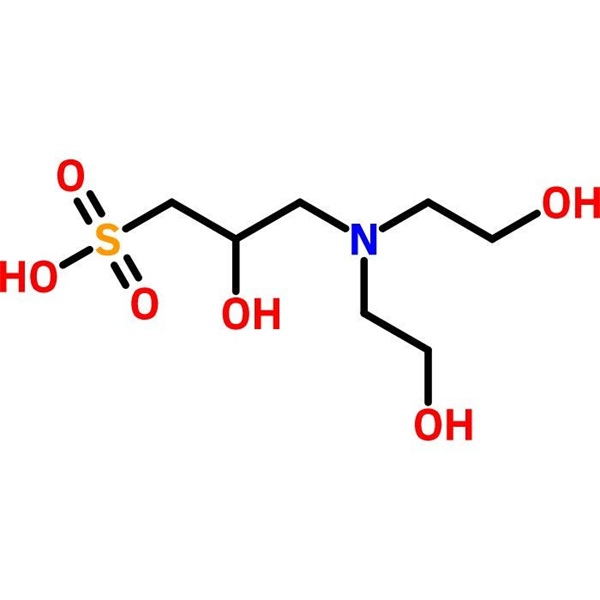Chemical Properties:
Package: Bottle, Aluminium foil bag, 25kg/Cardboard Drum, or according to customer's requirement. Storage Condition: Store in sealed containers at cool and dry place; Protect from light and moisture.Shanghai Ruifu Chemical Co., Ltd. is the leading manufacturer and supplier of DIPSO (CAS: 68399-80-4) with high quality, commercial production. Welcome to order.| Item | Specifications |
| Appearance | White Powder to Crystal |
| Purity / Analysis Method | >99.0% (Titration) |
| Water (by Karl Fischer) | ≤1.00% |
| Useful pH Range | 7.0~8.2 |
| pKa (at 25℃) | 7.4~7.8 |
| Absorbance | ≤0.15 (0.5mol/L, H2O, 260nm) |
| Heavy Metals (as Pb) | ≤0.001% |
| Chloride (Cl) | ≤0.05% |
| Sulphate (SO4) | ≤0.05% |
| Iron (Fe) | ≤0.0005% |
| Solubility in Water (10%) | Clear, Colorless Solution |
| pH (1% aq) | 2.5~5.5 |
| Infrared Spectrum | Conforms to Structure |
| Test Standard | Enterprise Standard |
| Usage | Biological Buffer; Biochemical Research |
Description:
Specifications:
Package & Storage:
| Chemical Name | DIPSO |
| Synonyms | DIPSO Free Acid; 3-[N,N-Bis(2-Hydroxyethyl)amino]-2-Hydroxypropanesulfonic Acid; 3-[N,N-Bis(2-hydroxyethyl)amino]-2-Hydroxy-1-Propanesulfonic Acid |
| CAS Number | 68399-80-4 |
| CAT Number | RF-PI1669 |
| Stock Status | In Stock, Production Scale Up to Tons |
| Molecular Formula | C7H17NO6S |
| Molecular Weight | 243.27 |
| Melting Point | 189.0~192.0℃ (lit.) |
| Density | 1.494±0.06 g/cm3 |
| Brand | Ruifu Chemical |
Advantages:
FAQ:
Application:
DIPSO (CAS: 68399-80-4) is is a zwitterionic buffer useful in the pH range of 7.0~8.2. Studies show that using one buffer limits the ability to adjust the range of buffering capacity. To increase the range of buffering capacity research suggests that it may be beneficial to combine multiple buffers such as HEPES (CAS: 7365-45-9), MOPS (CAS: 1132-61-2) and DIPSO (CAS: 68399-80-4). This buffer combination will allow the researcher the ability to expand pH buffering over a range of temperatures while decreasing the individual concentrations of buffers used, thus lowering the chance of toxicity.


